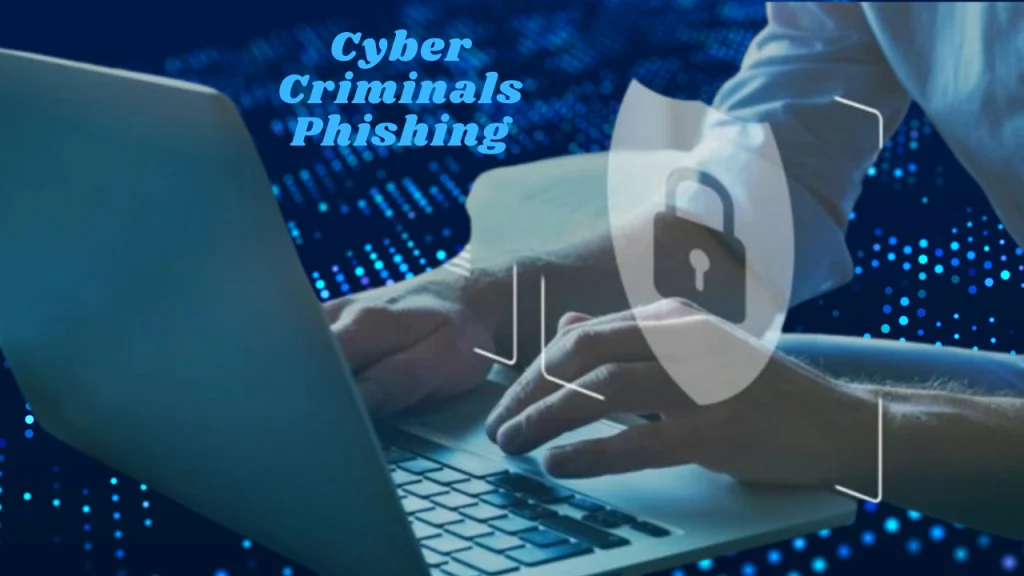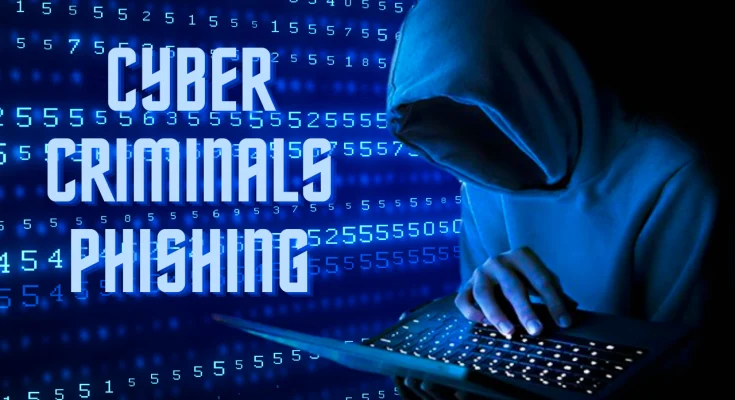Introduction to
In today’s digital age, the threat of cybercrime is more prevalent than ever before. One of the most common and dangerous tactics used by cyber criminals is Phishing . You may have heard this term before, but what exactly is phishing?
Phishing is a fraudulent practice in which individuals or organizations use deceptive tactics to obtain sensitive information such as passwords, credit card numbers, or personal information from unsuspecting victims. This can be done through various means, including emails, text messages, social media messages, or even phone calls.
The goal of phishing attacks is to trick people into believing that they are communicating with a legitimate source in order to gain their trust and ultimately steal their personal information. These attacks have become increasingly sophisticated over the years and can be difficult to detect.
Types of Phishing Attacks
There are several types of phishing attacks that cyber criminals use to target their victims. One of the most common types is known as email phishing. In this method, attackers send out mass emails that appear to come from a legitimate source such as a bank or online retailer. The email will often contain urgent requests for personal information or ask the recipient to click on a link that leads them to a fake website designed to steal their information.
Another type of phishing attack is known as spear phishing. Unlike email phishing, this tactic involves targeting specific individuals or organizations with personalized messages that are tailored to their interests or needs. These messages may appear more authentic and convincing since they contain specific details about the recipient.
How to Protect Yourself from Phishing
Protecting yourself from falling victim to a phishing attack requires vigilance and caution when it comes to your online activities. Here are some tips you can follow:
– Be wary of suspicious emails: If you receive an email requesting personal information or containing links from unknown sources, do not open it.
– Do not click on links in emails: If you receive an email asking you to click on a link, always hover over the link to see if it is legitimate before clicking.
– Keep your security software up to date: Make sure you have antivirus and anti-malware software installed on your devices and keep them updated regularly.
– Double-check URLs: Before entering sensitive information on a website, check the URL to make sure it is secure. Look for “https” at the beginning of the URL and a padlock icon in the address bar.
– Be cautious of unexpected phone calls or messages: If someone claiming to be from a company or organization asks for personal information over the phone or through text message, do not provide it unless you can verify their identity.

What is Phishing?
Phishing is a common type of cyber attack that tricks individuals into providing sensitive information such as personal data, financial details, or login credentials. It is typically carried out through fraudulent emails, text messages, or websites that resemble legitimate sources and aim to deceive unsuspecting victims.
The word “phishing” is derived from the term fishing because cyber criminals use bait in the form of fake communication to lure their targets. These tactics are often sophisticated and can be challenging to identify, making it crucial for individuals to be aware of how they work and how to protect themselves.
One of the most common types of phishing attacks is known as email phishing. It involves sending an email that appears to be from a reputable source such as a bank, company, or government agency. The sender’s name and email address may seem legitimate at first glance, making it easy for recipients to fall for the trap.
These emails often contain urgent requests for personal information or warnings about account security issues that require action. They may also include links or attachments that direct victims to fraudulent websites or install malware on their devices.
Another popular form of phishing is smishing (SMS phishing), which uses text messages instead of emails. Similar to email phishing, smishing messages appear to come from trusted sources and contain urgent requests or offers designed to trick users into clicking on malicious links or sharing sensitive information.
Spear phishing takes these tactics one step further by targeting specific individuals rather than random targets. Cyber criminals research their victims’ backgrounds and tailor their messages accordingly, making them more convincing and difficult to detect.
In addition to these tactics, there are other forms of phishing such as vishing (voice call phishing) where scammers impersonate legitimate entities over the phone, whaling which specifically targets high-level executives with access to valuable data within an organization, and clone phishing where attackers copy existing legitimate emails in an attempt to steal sensitive data.
To protect yourself from falling victim to these tactics, it is essential to be cautious when receiving any requests for personal information, especially through unsolicited emails or messages. Be wary of urgent requests and always verify the authenticity of email addresses, links, and attachments before clicking on them.
Phishing is a prevalent cybercrime that can have severe consequences for individuals who fall victim to these tactics. By understanding how they work and implementing precautionary measures, we can protect ourselves from becoming easy targets for cyber criminals. Remember to always think twice before providing personal information online and stay vigilant against potential threats.
READ MORE INTRESTING ARTICLE: 7 Essential Best Tips for Mastering the CQA Test
Common Indicators of a Phishing Attempt
One of the most common tactics used by cyber criminals to gain access to sensitive information is phishing. Phishing attempts are fraudulent emails, text messages, or phone calls that appear to be from a reputable source in order to deceive individuals into sharing personal information such as login credentials, credit card numbers, or social security numbers.
These attacks are becoming increasingly sophisticated and can be difficult to detect. However, there are certain indicators that can help you identify a phishing attempt and protect yourself from falling victim.
Firstly, pay attention to the sender’s email address. Often times, scammers will create fake email addresses or use misspelled versions of legitimate ones in order to trick recipients into thinking they are receiving an email from a trusted source. Before clicking on any links or providing any personal information, double check the sender’s email address for any suspicious elements.
Another indicator of a phishing attempt is urgent language or requests for immediate action. Cyber criminals often use fear tactics in their emails, claiming that there is an urgent issue with your account and that you need to act quickly in order to avoid negative consequences. Be wary of emails that pressure you into taking immediate action without giving you time to think it over.
In addition, watch out for generic greetings or lack of personalization in the email. Legitimate organizations usually address recipients by their name and may even include specific details about their account or recent interactions with the company. If an email starts with “Dear Customer” instead of addressing you by name, it could be a red flag.
Phishing attempts also often contain spelling and grammar errors. This is because many scammers operate outside of English-speaking countries and may not have strong language skills when crafting their fraudulent messages. If an email contains obvious mistakes or awkward sentence structure, it could indicate that it is not coming from a legitimate source.
One important indicator of a phishing attempt is suspicious links or attachments within the email. These may lead to fake websites that are designed to steal your personal information or install malware on your device. Always hover over the links to see if they match the sender’s domain and avoid opening any attachments from unknown sources.
By being aware of these common indicators of a phishing attempt, you can better protect yourself from falling victim to cyber criminals.
Remember to always be cautious when receiving unexpected emails or messages, and double check any suspicious elements before taking any action. Stay vigilant and keep yourself safe in the digital world.
READ MORE ARTICLE: SKYTECH SOLUTION
Suspicious Email Addresses
Suspicious email addresses are one of the most common tactics used by cyber criminals to trick individuals into falling for their phishing scams. These fraudulent emails often appear to be legitimate, but upon closer inspection, they contain subtle clues that can reveal their true intentions.
One major red flag to look out for is a suspicious or unfamiliar email address. Cyber criminals will often use fake or spoofed email addresses in an attempt to make their messages appear more legitimate. This could include using a similar domain name as a well-known company or organization, with just a few letters changed or added.
For example, an email from “bankofamerica-support@gmail.com” may seem like it is coming from the official Bank of America support team, but in reality, it is a phishing attempt.
NOTE
I hope that the content of this article has been able to achieve its goals. naturally, if you have other questions concerning the , feel free to ask. thank you




